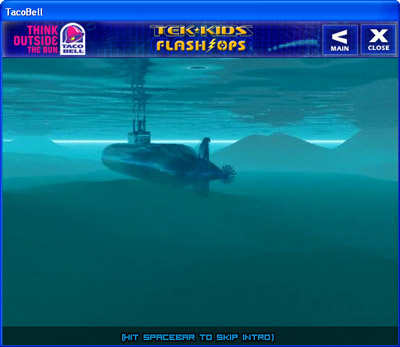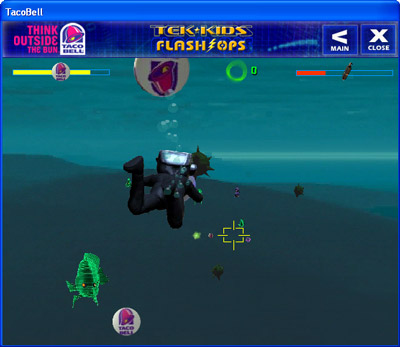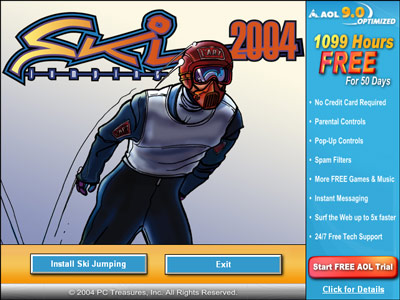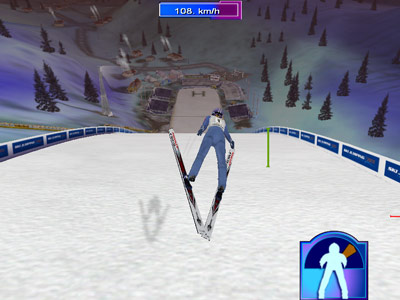I’m branching out with tonight’s game, system-wise. My motivation is to keep with the environmental theme started by Taco Bell’s Tek Kids. Tonight’s game is Zen: Intergalactic Ninja for the old 8-bit NES:

I purchased this used title a few years ago and played it briefly. The reason it came to mind now is based on what stood out at me during that brief gameplay: Our boy Zen does one better than those enviro-conscious Tek Kids and actually plants bombs in an industrial factory and must escape in 99 seconds. I’ve played a lot of games with time limits but at least this one has a reason for it.
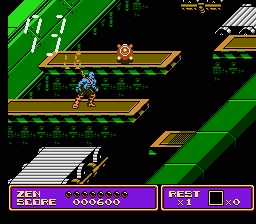
The above is a screenshot of the inside of the “Toxic Factory” (is there really a market for Toxic and a compelling motivation to build a factory to produce it?). Our little eco-terrorist arms a number of incendiary devices and must proceed along an isometric, quasi-3D plane and dodge security drones, roving lasers, and ceiling claws in order to escape. I should apologize in advance now because if I’m the best defender earth has against polluters, you all might as well learn to enjoy Toxic, and soon. This is a tough stage, or perhaps I’m exceptionally rusty at old NES action games.
Just when I started getting dispirited that I might not get a useful diversity of screenshots for MobyGames, I take a good look at the world map that drops you into the Toxic Factory– it’s actually a stage select. So I choose the next level, the Acidic Forest Stage:
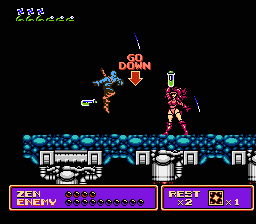
This stage is somewhat difficult to wrap one’s head around. You first enter the forest on the ground level. Then the game goes into an auto-pilot mode where Zen does these magnificent leaps to the tops of the trees, and then leaps higher into… some higher plane where he meets Sulfura as depicted above. Now you’re in control again and you grab some powerup, at which point the game implores you to “go down”. At first I thought this meant I was supposed to gun for Sulfura’s legs. But then I headed back down into the forest below. You walk around and revive the dying flowers by striking them with your photon stick. Meanwhile, there are these little Metroid-like creatures that float about, masking themselves as clouds, dropping acid rain, and shooting lightning.
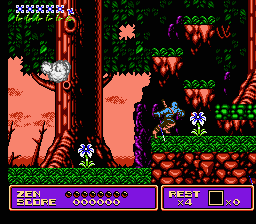
I am not entirely sure what the end goal of this stage is. I kept hopping around the small wooded region trying to revive all the flowers (status is indicated by the flower meter in the upper left corner of the screen), all the while thinking that this type of assignment is rather beneath a ninja, particularly an intergalactic one. I was eager to move onto the next mission– the Off Shore Oil Rig Stage.
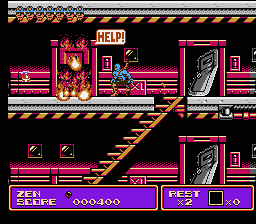
This is pretty straightforward– the whole oil rig is going up in flames (there’s probably an environmental message in there somewhere) and you’re on a rescue mission to get the people out. Dodge the random enemy creeping along the ground (I think they might be sentient oil slicks), dodge the fireballs raining from above, grab the fire extinguisher powerups and use them on doors that are screaming for assistance.
This episode doesn’t seem like it would be so bad. However, you can only use a fire extinguisher once, and I mean per game, and it doesn’t appear that there are any surplus extinguishers. Thus, if you grab one but die before using it and must restart, you’re pretty much sunk until it’s time to continue the level. If I were to give the game’s designers the benefit of the doubt, I would have to guess that they were using Zen: Intergalactic Ninja as a metaphor that saving the environment is difficult, tedious work.
The fourth stage that you have access to from the start of the game (it’s possible that there are more stages after you finish these four; it’s a big world map) is the High Speed Railway stage. Out of all four stages played I found this one was actually marginally fun:
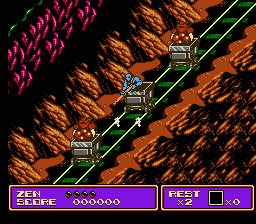
Zen finds himself in a mine cart at high speeds as promised. He has the ability to make the cart jump and can still attack while riding. The scrolling alternates between side view and isometric view depending on where the track is leading. Sometimes there is a switch you can hit to select a different, but no less lethal, track. This stage reminded me of several stages from Battletoads, which is probably why I enjoyed this part so much. Lest you think that this is disconnected from the game’s overall environmental theme, the green, pointy-headed aliens that brief you before each stage explain that you must stop “Garbageman” from spewing nuclear waste all over the place.
This game came out in 1993, late in the NES’ lifetime. It’s characteristic of the NES’ twilight days, when the game designers really knew how to make graphics, sound, and gameplay rock on the old grey box and I applaud the variety of gameplay on display here, as well as the attention given to graphics and animation. I’m not saying I necessarily like the game. I kept hoping that Ryu from Ninja Gaiden would pop in and show Zen how things are done.

